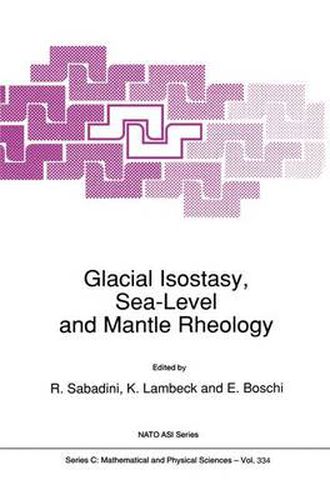Readings Newsletter
Become a Readings Member to make your shopping experience even easier.
Sign in or sign up for free!
You’re not far away from qualifying for FREE standard shipping within Australia
You’ve qualified for FREE standard shipping within Australia
The cart is loading…






This title is printed to order. This book may have been self-published. If so, we cannot guarantee the quality of the content. In the main most books will have gone through the editing process however some may not. We therefore suggest that you be aware of this before ordering this book. If in doubt check either the author or publisher’s details as we are unable to accept any returns unless they are faulty. Please contact us if you have any questions.
by K. Lambeck, R. Sabadini and E. B08Chi Viscosity is one of the important material properties of the Earth, controlling tectonic and dynamic processes such as mantle convection, isostasy, and glacial rebound. Yet it remains a poorly resolved parameter and basic questions such as whether the planet’s response to loading is linear or non-linear, or what are its depth and lateral variations remain uncertain. Part of the answer to such questions lies in laboratory observations of the rheology of terrestrial materials. But the extrapolation of such measurements from the laboratory environment to the geological environment is a hazardous and vexing undertaking, for neither the time scales nor the strain rates characterizing the geological processes can be reproduced in the laboratory. General rules for this extrapolation are that if deformation is observed in the laboratory at a particular temperature, deformation in geological environments will occur at a much reduced temperature, and that if at laboratory strain rates a particular deformation mechanism dominates over all others, the relative importance of possible mechanisms may be quite different at the geologically encountered strain rates. Hence experimental results are little more than guidelines as to how the Earth may respond to forces on long time scales.
$9.00 standard shipping within Australia
FREE standard shipping within Australia for orders over $100.00
Express & International shipping calculated at checkout
This title is printed to order. This book may have been self-published. If so, we cannot guarantee the quality of the content. In the main most books will have gone through the editing process however some may not. We therefore suggest that you be aware of this before ordering this book. If in doubt check either the author or publisher’s details as we are unable to accept any returns unless they are faulty. Please contact us if you have any questions.
by K. Lambeck, R. Sabadini and E. B08Chi Viscosity is one of the important material properties of the Earth, controlling tectonic and dynamic processes such as mantle convection, isostasy, and glacial rebound. Yet it remains a poorly resolved parameter and basic questions such as whether the planet’s response to loading is linear or non-linear, or what are its depth and lateral variations remain uncertain. Part of the answer to such questions lies in laboratory observations of the rheology of terrestrial materials. But the extrapolation of such measurements from the laboratory environment to the geological environment is a hazardous and vexing undertaking, for neither the time scales nor the strain rates characterizing the geological processes can be reproduced in the laboratory. General rules for this extrapolation are that if deformation is observed in the laboratory at a particular temperature, deformation in geological environments will occur at a much reduced temperature, and that if at laboratory strain rates a particular deformation mechanism dominates over all others, the relative importance of possible mechanisms may be quite different at the geologically encountered strain rates. Hence experimental results are little more than guidelines as to how the Earth may respond to forces on long time scales.